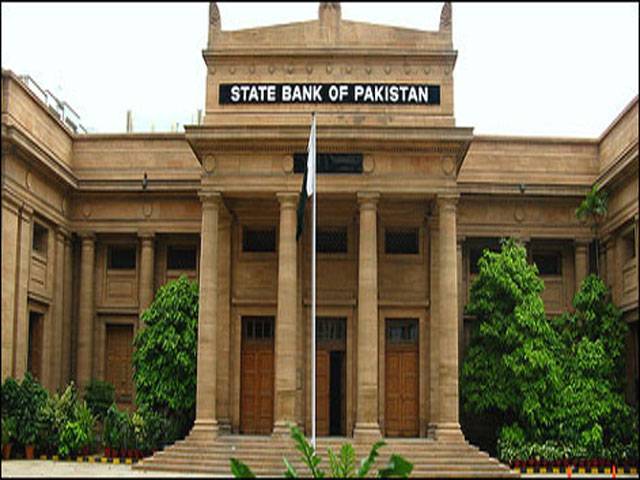Pakistan’s economy is projected to grow in the range of 3-4 percent in the current 2014-15 fiscal year (FY14) while average inflation is likely stay between 10 to 11 percent, according to annual report on the state of economy released by the State Bank of Pakistan.
The report projected that the GDP growth in the range of 3 to 4 percent for FY14, which is higher than the IMF’s growth forecast of 2.5 to 3 percent. While inflation outlook based on October 2013 data, reported earlier, was in the range of 10.5 to 11.5 percent, a more realistic outlook based on latest data shows average inflation for FY14 to remain between 10 and 11 percent.
It said that the country’s economy grew at 3.6 percent and inflation fell to single-digit in FY13. It said soft global commodity prices, downward revision in energy prices and a relatively stable exchange rate allowed the average inflation rate to fall to 7.4 percent in FY13, which was much lower than the 9.5 percent target for the year.
According to the report, robust growth in construction activity and capacity enhancement in a few sub-sectors, supported the industrial sector. Global prices helped contain Pakistan’s import bill, and there was some improvement in exports. Furthermore, higher than anticipated Coalition Support Fund (CSF) inflows, and modest growth in worker remittances, reduced the current account deficit to 1.0 percent of GDP in FY13. Notwithstanding favorable developments, growing security concerns and persistent structural weaknesses continue to impede economic growth.
SBP report said that challenges in managing public sector enterprises; the need to expand the tax net to untaxed or under-taxed areas; to contain untargeted subsidies; to tackle theft and leakages in the energy sector; to revitalize the private sector; and to increase documentation, were largely unaddressed during FY13.
“In a repeat from the previous year, the budget deficit exceeded the target for FY13 by a wide margin, as the realized deficit was 8.0 percent of GDP, against a target of 4.7 percent,” said the report. It added that the resulting pressure to secure financing, dominated policymaking throughout the year. For the third consecutive year, the energy sector was addressed by paying off the circular debt, which pushed the fiscal deficits above the respective targets for these years.
The report said that, with inadequate external funding, the onus of financing the fiscal deficit fell entirely on domestic sources – specifically the banking system. The government borrowed Rs 939.6 billion from commercial banks, and an additional Rs 506.9 billion from SBP. In effect, Pakistan’s domestic debt increased by Rs 1.9 trillion, a 24.6 percent increase from the end of FY12.
According to the report, the lack of external inflows also created challenges in financing the relatively small current account deficit. The financial account recorded a net inflow of only US$ 0.3 billion during the year, compared to US$ 1.3 billion last year, and US$ 5.1 billion in FY10. This, along with significant repayments to the IMF, pulled down SBP’s liquid FX reserves to a 55-month low of US$ 6.0 billion by end-June 2013.
According to the report, SBP projects GDP growth in the range of 3.0 4.0 percent for FY14, which is higher than the IMF’s growth forecast of 2.5 3.0 percent. While inflation outlook based on October 2013 data, reported earlier, was in the range of 10.5 to 11.5 percent, a more realistic outlook based on latest data shows average inflation for FY14 to remain between 10 and 11 percent.
It further said that the approval of a 3-year (US$ 6.64 billion) Extended Fund Facility from the IMF, and expected financial support from other IFIs, should bring stability to the domestic FX market in FY14.
Friday, April 19, 2024
Pakistan’s economy likely to grow by up to 4pc in FY14: SBP

Caption: Pakistan’s economy likely to grow by up to 4pc in FY14: SBP
Mehwish Hayat says she would like to work with Aamir Khan
9:59 PM | April 18, 2024
'That'll be awesome,' Rohit Sharma on idea of Pakistan vs India Test series
9:17 PM | April 18, 2024
Turkiye commends Pakistan's efforts in fostering regional peace
9:03 PM | April 18, 2024
CM Maryam's security squad hits biker to death in Narowal
9:02 PM | April 18, 2024
Hafiz Naeemur Rehman sworn in as new emir of Jamaat-e-Islami
8:54 PM | April 18, 2024
Hepatitis Challenge
April 18, 2024
IMF Predictions
April 18, 2024
Wheat War
April 18, 2024
Rail Revival
April 17, 2024
Addressing Climate Change
April 17, 2024
Justice denied
April 18, 2024
AI dilemmas unveiled
April 18, 2024
Tax tangle
April 18, 2024
Workforce inequality
April 17, 2024
New partnerships
April 17, 2024
ePaper - Nawaiwaqt
Advertisement
Nawaiwaqt Group | Copyright © 2024





